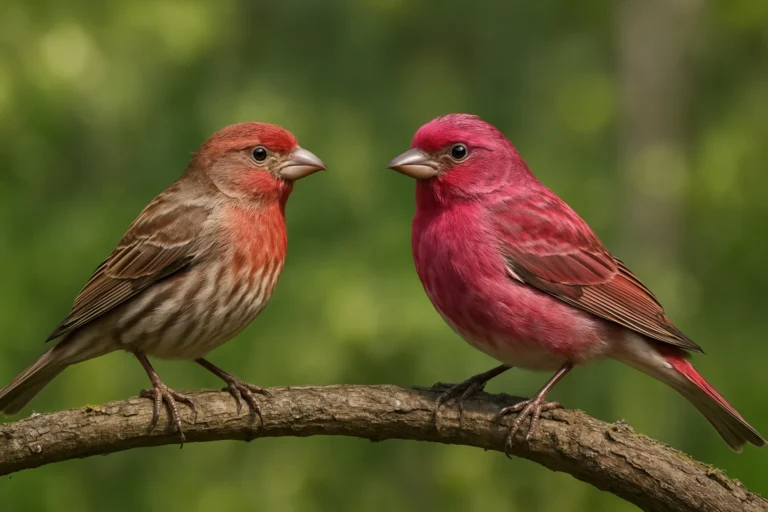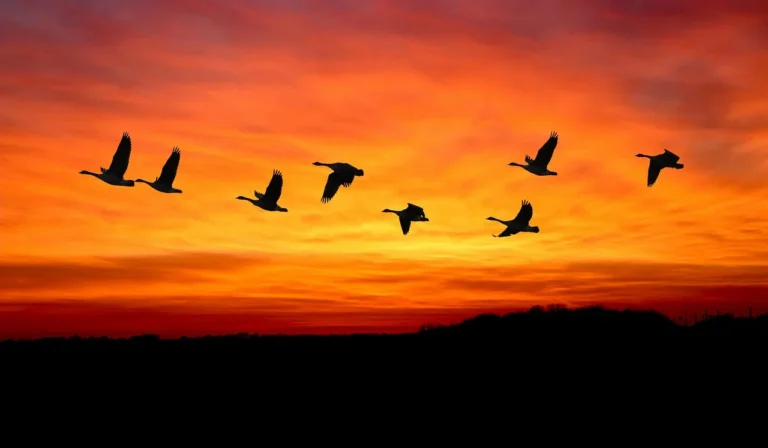Birdwatching is a hobby that attracts millions of people around the world. The joy of watching wild birds flying high up in the sky is matchless. In fact, it is not only one of the most exciting activities but also offers numerous physical and mental health benefits.
If you are here, it means you are ready to get into the world of birding. Congratulations on starting such a rewarding activity. Remember, birdwatching is not something that requires you to buy state-of-the-art, expensive instruments or invest a substantial amount of money. All you need to do is get your spirit high, get some essential gear, learn to identify birds, explore the best destinations, and follow birding etiquette.
Today we are going to discuss how to start birdwatching as a hobby. So, keep reading and discover the joy of birding.
Pick a Bird Identification Book or App
The first thing that you will need to become a pro birdwatcher is a bird identification book or app. In the beginning, you might not be able to identify different species of birds, which is important. For this, you will need either a book or an application. If you want to go deep, it would be best to get both. Here is the list of the best birdwatching apps for beginners:
- eBird
- Merlin Bird ID
- Audubon Bird Guide
- Sibley Birds 2nd Edition
- GoBird
- iBird Pro
- Picture Bird
Some of the best bird identification books, on the other hand, are Kaufman Field Guide to Birds of North America, The Sibley Guide to Birds, The Backyard Birdwatcher’s Bible, and The Backyard Bird Chronicles. Having these bird identifiers with you will be a great thing to begin with.
Choose Your Gear
The amazing thing about this remarkable hobby is that you do not have to be extravagant. A decent pair of binoculars, and that’s all you need. It will help you make those little birdies bigger for a closer look. Since you are just starting, there is nothing to worry about the type of this essential gear. Here is a list of top and cost-effective binoculars for birdwatching in 2025:
- Vortex 10×42 Triumph HD
- Celestron Nature DX 8×42
- Nikon Trailblazer 8×25 ATB
- Bushnell Falcon 10×50
- SkyGenius 10×42
Worry not. You will not have to break the bank to buy these binoculars. All the above-listed field glasses are cost-efficient for a new birdwatcher.
Start in Your Own Backyard
Want to know another amazing thing? Birding starts in your own backyard. Yes, you do not have to travel long distances at the start. Just set up a small bird feeder or a shallow birdbath to attract different species. You might be surprised by how many colorful and unique feathered creatures visit, especially in the morning or late afternoon. This is a great opportunity to witness beautiful backyard birds like sparrows, pigeons, doves, crows, robins, woodpeckers, finches, hummingbirds, and wrens, depending on your location.
Wake Up with the Birds
Have you ever noticed that birds wake up early in the morning? That is because they are natural early risers. With that said, there is no better time to watch birds than at dawn. The early morning hours are when avians are the most active. They look out for the food, sing their morning songs, and move around before the day gets hot. So, become a morning person if you want to join millions of bird observers.
Explore Different Locations
Here is the next step to becoming a regular birder. It is the time you have been waiting for anxiously. Step outside of your backyard, get into nature and explore different locations. There, a vibrant array of beautiful avians will greet you. Some of the best and most common locations for birdwatching include parks, lakes, natural reserves, woods, botanical gardens, riverbanks, and rural areas.
However, if you are looking for global locations, look at the following table:
| Region | Country | Location | Common Birds |
| North America | USA | Central Park, New York | American Robin, Blue Jay, American Goldfinch |
| Canada | Stanley Park, Vancouver | Canada Goose, Barred Owl, Grosbeaks | |
| South America | Brazil | Ibirapuera Park, São Paulo | Black Vultures, Neotropic Cormorants, Rufous Hornero |
| Argentina | Costanera Sur Ecological Reserve, Buenos Aires | Nanday Parakeet, Hummingbirds, Grebes | |
| Europe | UK | Hyde Park, London | Goldcrests, Mallards, Grey Heron |
| France | Bois de Boulogne, Paris | Cormorants, Coots, Swans | |
| Germany | Tiergarten, Berlin | Jays, Woodpeckers, Starlings | |
| Asia | India | Lodhi Gardens, New Delhi | Indian Peafowl, Asian Koel, Black Drongo |
| Pakistan | Jinnah Park, Lahore | Mynas, Kites, Doves | |
| Africa | South Africa | Kirstenbosch Gardens, Cape Town | Cape Bulbul, Hadeda Ibis, Southern Boubou |
| Egypt | Al-Azhar Park, Cairo | Hoopoes, Kestrels, Doves | |
| Australia & Oceania | Australia | Royal Botanic Gardens, Sydney | Silver Gull, Maned Duck, Little Corella |
| New Zealand | Auckland Domain, Auckland | Tui, Fantails, Kiwi |
Learn to Identify Birds by Their Calls
There are quite a few things as soothing as listening to bird songs. Generally, birdwatchers start learning to identify birds by their calls once they have gained enough experience in the hobby. However, nothing should stop you from beginning in the early phase. Initially, all the sounds will seem like a jumble to you but do not lose heart. With a little patience, you will develop an awareness of patterns and differences.
Some birds sing like nightingales sing sweet melodies. Other birds, such as sparrows and bluejays, make sharp chirps and whistles. Similarly, woodpeckers drum rapidly against the tree trunk while, at night, you can listen to owls hooting softly. The best way to understand these sounds is to close your eyes and enjoy the harmonious tunes of your feathered friends.
Keep a Bird Journal
Here is an amazing and easy way to track all the wonderful birds you witness. It does not have to be anything fancy, though. All you need is a simple notebook and a pen. Even your phone can work just fine. Whenever you see a bird, jot down the following things:
- What it looked like
- Where you saw it
- When you saw it
- What was it doing
- What stood out about the bird
The more details you include, the easier it will be to remember your sightings. Plus, looking back at your notes can be really exciting, especially as you start to recognize patterns in bird behavior. Adding little sketches or pasting in pictures will be another incredible thing to do.
Follow Birding Etiquette
Respecting nature is a critical part of birdwatching. After all, you want to be an ethical birder. Doing this hobby the right way helps protect birds and their habitats. Remember, these sweet little creatures are easily startled, and a little care can make them feel comfortable and safe. Make sure to follow the given etiquette while birding:
- Keep your distance
- Don’t make a noise
- Avoid damaging or littering plants
- Stick to designated trails
- Don’t use playback too much
- Be considerate of fellow birdwatchers
These guidelines are essential to keep your hobby enjoyable and peaceful for others as well as birds.
Say Hi to Other Birders
Birders are among the most helpful and supportive people in the world. They are always ready to share valuable insights and knowledge about birds and their spotting points. If you see someone with binoculars or a camera, chances are they are fellow birdwatchers. Reach out to them. Do not be shy. Give them a little nod or approach them to say hello.
It is not the only place where you can meet other hobbyists. In today’s digital age, different social media platforms like Facebook and X have become a hub for such communities. Joining these forums will help you a lot along the journey. Whether you meet other birders in person or online, you will quickly see that this hobby brings people together. Who knows? You might even make a few bird-watching buddies along the way.
Start Your Birdwatching Journey Now
In short, birding is one of the world’s most amazing activities. Fortunately, becoming a birdwatcher is not a tough nut to crack. Pick a bird identification book or app, buy affordable binoculars, explore multiple locations, become a morning person, and jot down what you experience about birds. Following birdwatching etiquette is crucial to witness those feathered friends ethically. Keep visiting our blog for expert advice, fun birding stories, and everything you need to make this exciting journey even more rewarding.


